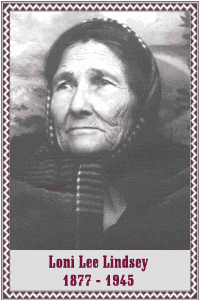

Author Burns Reservation


American Indian Tribes
Family Tree Search
Free Genealogy Search
Free People Search
Scotland Royalty
Comanche Lodge
Cherokee Census Rolls
Cherokee Indian History
Native American DNA Testing

 This page is dedicated to the loving memory of my Great-Great Grandmother.
This page is dedicated to the loving memory of my Great-Great Grandmother.
Ancient Sauta Town
Over 200 years ago in a place almost forgotten in time, a series of historical events took place that has indeed proven to be very important to my family history.
My own personal quest to learn more about my ancestors has led me to the discovery of events and places that in history has also had a very special meaning to many people. This also has included those very early settler families that has helped shape the history of the United States of America.
As many family researchers realize, the USA worked to establish itself through the means of hundreds of treaties that affected various tribes. Over the centuries, these facts have proven to have had a major influence on those of mixed-blood ancestry who are living today.
One of these treaties was made in the year 1819 with the Tsalagi and led to land cessions which had a direct effect on members of my family, which I will relate to you as best I can.
In the year 1819 the Tsalagi entered into a treaty that resulted in the people being offered lands in trade for what was known as life or simple-fee allotments.
This land cession included lands that began on the Tennessee River at the tribal boundary in Madison CO, AL to the mouth of the Hiwasee River and several other areas.
It was decreed that heads of households were to be allowed 640-acre allotments within the ceded territory for those individuals who desired to become United States Citizens.
Many families at this time opted to come under the terms of this agreement and desired to become US Citizens so that their families would be able to remain in the east, with some individuals accepting this offer as compensation for the lands that were ceded.
It was also decreed at that time that all the whites inhabiting these allotments were to be viewed as intruders and that they would in fact be removed.
In the year 1815, my 5th Great Grandfather John Gross arrived in what was then known as Mississippi Territory in what later became Jackson County, Alabama.
While traveling to the area down the Tennessee River, the family was known to live as Nickajack Cave for about a year prior to arriving.
There are biographies and other writings that document that my family was required to cut cane in order to make pathways during their travels through this unique region.
John Gross in fact built the very first gristmill on North Sauta Creek.
His son Jacob and Grandson John were known to have operated the mill in later years.
On Dec 14, 1819, AL was admitted as a State in the Union.
In 1820 the first mail route was established, and in 1822 R. J. Meigs Jr., became the first postmaster. Meigs' father was the Indian Agent and is mentioned in several treaties.

Similar laws also began appearing throughout other areas which was designed to undermine the sovereignty of the lands belonging to the Tsalagi, and were enacted to force white culture upon the Five Civilized Tribes.
Mounting pressure was forced upon the people to remove out of their traditional lands to be forced to go West of the Mississippi so that white settlers may have their property.
The U.S. Government policy of removal became the foundation of all diplomacy among the tribes to such a point that the leaders grew weary of being harassed by peace envoys that were bent on securing lands from the people.
When diplomacy could not result in the cession of lands, individual states began policies of genocidal acts of aggression and began passing laws that made it almost impossible for anyone to have any peace while remaining East of the Mississippi.
This constant pressure eventually resulted in political divisions among the people that resulted in several factions that were embittered against one another. These factors sadly led to a series of tragic events that has become known as the Trail of Tears.
In the year 1835, a prominent headman named Dr. William Alexander Davis was a member of the delegation that made the treaty of New Echota.
William A. Davis married the daughter of Author Burns who was a prominent warrior, having fought in the War of 1812 at the Battle of Horseshoe Bend under Andrew Jackson during the wars with the Muscogee.
In 1819, the Heirs of Arthur Burns were granted land on North Sauty Creek as per the treaty of Washington made that year.
Sauty, or Sautee as it is also known was a very important lower town. The various spellings are a European corruption of the ancient name for Chota the sacred peace town capital.
Its'ti as it is properly known was a famous place of meeting for leaders and was the birthplace of the written language created by the famous Sequoyah or as he is sometimes known George Guess.
Sequoyah in fact lived for several years in Sautee Cave.
The people were well known to have mined Saltpeter in the mine going back to the 1780's that was used for making gunpowder.
Many living near places such as Paint Rock Valley and Willstown were residing in these mountain areas and were able to live there in relative safety during the Revolutionary War.
A story that appeared in the famous Phoenix newspaper on August 13, 1820, tells us that during a conversation with some young men at Sautee, Sequoyah was inspired to begin his development of the written language.
After Sequoyah developed his system amid much mocking and derision by those who felt he was foolish, he then traveled to Arkansas and taught some of the people the language he created and one of these men then wrote a letter to his friends remaining in the east that he then read to the leaders at Sauty.
Upon hearing this miracle on paper with their own ears, many Tsalagi immediately began learning the system, and within a very short time the entire tribe became literate in reading and writing their own language.
This ancient town has proven to be a very important location and has gone down in history as the birthplace of the Syllabary.
This land surrounding the famous cave was located upon a parcel of land granted to the heirs of Arthur Burns via the 1819 agreement which consequently was inherited by William Alexander Davis.
Dr. William A. Davis was descended from his father who was a Revolutionary War Soldier that had married the daughter of Chief Black Fox.
His father in fact lived to be the ripe old age of 95 and is buried in the area and his gravesite is well known to local residents.
In 1834, the U.S. Congress passed a law providing for the removal of the Tsalagi from the states of AL, TN and GA to the Indian Territory.
Chief John Ross, opposed to this removal, refused to sign a treaty presented to him by the government that would give up the Homeland.
The government then gained the signatures of other leaders, which resulted in the treaty of New Echota that was signed by both Major & John Ridge, Stand Watie, Elias Boudinot and others.
Around this time about 15,000 individuals signed a petition urging the government to reject the treaty which was ignored.
After this situation took place, William A. Davis sold the Arthur Burns Reservation which included the famous cave to my 5th Great Grandfather Jesse French in the year 1837, just prior to removal.
These lands also included the summits of Cave & Pine Mountains and a large portion of Guntersville Lake.
My 4th Great Grandfather Abraham Gross married a woman named Rebecca who was the daughter of Jesse French and Mary Smith, and my grandmother's sister was in fact a woman named Nancy S. Davis. :o)
This sacred land near Sand Mountain known as the Arthur Burns Reservation was passed down in these two families through the years and is subsequently documented in several Lands & Deed Records that was later inherited by my 3rd Great Grandfather Thomas Jasper Gross from who my mother descends.
This area is also known as the location of the very first Church of Christ in the State of AL of which my family were original members of the congregation.
The French, Gross, & Davis families mentioned in these deeds and wills concerning the allotment later came to reside in East Texas in the county where my beloved Grandmother was born. :)
Members of this family married into the Lindsey family on my mother's maternal side.
These sorts of historical connections between families, both Red and White, for many people are often a source of confusion to many beginning family researchers.
This is why it is so vital to not focus entirely on just trying to find Natives in your family tree, but rather to carefully document all your branches so that you may receive the proper perspective of the lives of your ancestors to give you an idea on just how you came to be on this earth!
Tracing your ancestry can often be very difficult. It is very important to keep in mind that mixed families often have great trouble in locating records as it was very common place many years prior to our own generation that many prominent men were indeed known to have had two households at the same exact time.
It is not uncommon for people to find themselves in just this situation.
History has often been very cruel, and over the centuries there have often been events that still affect people today who are searching for the answers that call to them from deep within their soul where their blood refuses to be silent.
Many of those whose soul refuses to be silent are among the descendants of the people known as the Ani Yun Wiya.
All My Relations!
Privacy Policy









